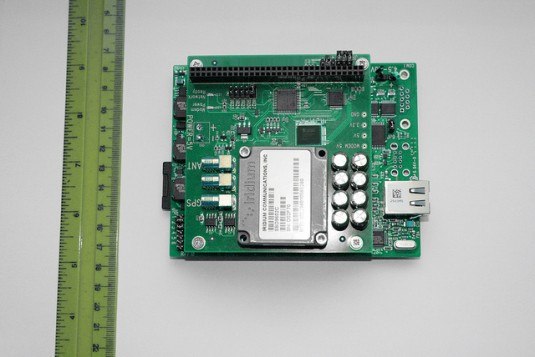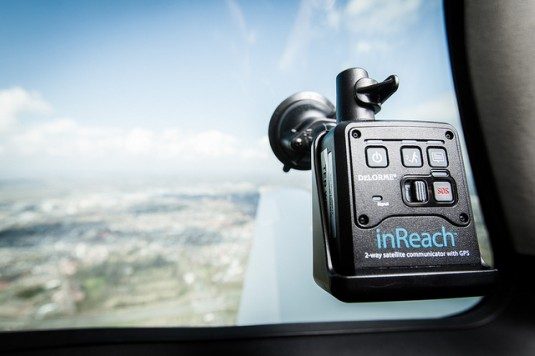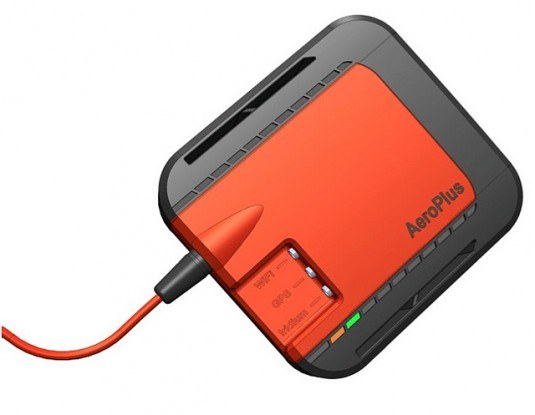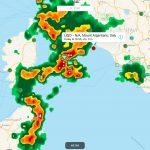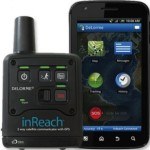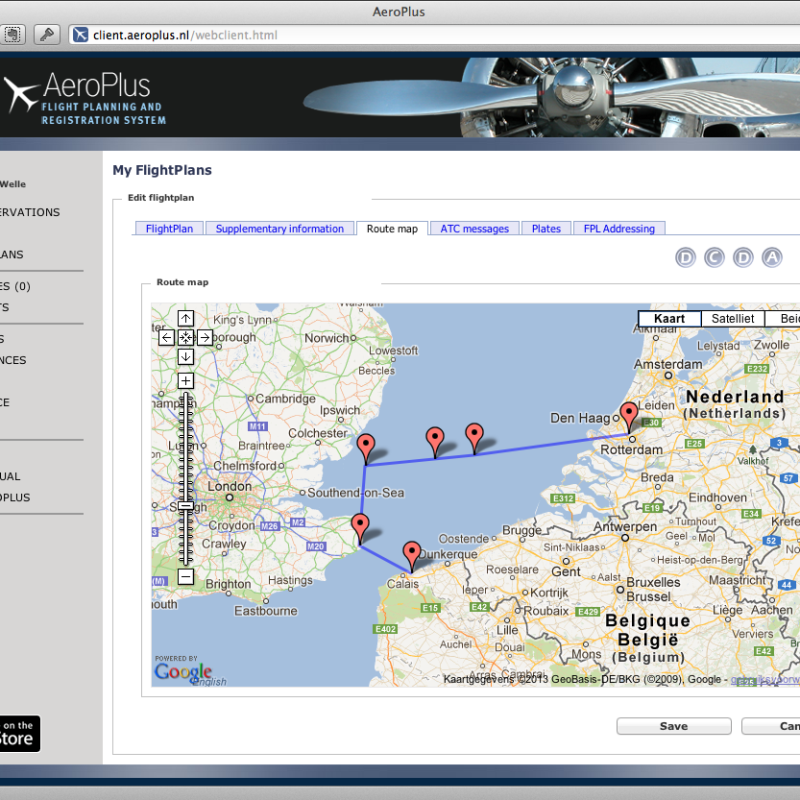Satellite data communication provides pilots with valuable data while en route, such as information on the weather around them as this is evolving during their flight. There is a specific need for up-to-date weather radar and strike images while en route.
Inside-the-box look at an initial AeroPlus satellite device prototype (abandoned Iridium version).
SPOT messenger
Initially, I used the SPOT messenger to stay connected with friends and family while flying. It gave me the assurance that I could easily tell my family and friends where I was and share a link to an online map showing my current position. If I needed assistance, I could push the SOS button and help would be underway. However, the SPOT messenger is a one-way communication device only. You cannot get a response back from your friends and family through the satellite network. You can only share your location and send them messages. In case of emergency, you can activate the emergency button and alert the rescue services. The rescue services cannot contact you through the SPOT device. Spot works around the world, including in virtually all of the continental United States, Canada, Mexico, Europe, and Australia, and portions of South America, Northern Africa, and Northeastern Asia. And provided you’re in a good coverage area, Spot offers a 99 percent probability of sending a successful message within 20 minutes. It does not utilise the Iridium network and thus needs time to connect to the satellite network and might not have good coverage at the poles. The latest model SPOT Gen 3 can work with 2,5-minute position updates and a motion sensor. It comes cheap to buy and does its job, but is a little bit limited in usage as it does not record speed and altitude which the other solutions do offer.
Delorme inReach
The inReach satellite device from Delorme can communicate 2-way through the Iridium satellite network. The Iridium satellite network has full coverage worldwide through its 66 active satellites. Nonetheless, the Iridium network was not developed to handle large data transfers. The Inreach device uses the short-burst-data chip of Iridium which can send and receive short text messages only.
inReach satellite device mounted in the aircraft with a suction cup mount to a window.
Sending short text messages to the inReach device is done through a web form. The form limits the number of characters you can type and permits you to send the message to the inReach user. Our software developers developed a listening service for the message-send feature, enabling us to request weather data from the device and getting METAR, TAF and other weather data back via short text messages. This way, we can request weather while enroute on a long flight and prepare ourselves better for evolving weather at our destination or alternate. However, the short-burst-data chip of Iridium is limited in its use and only tiny bits of information at a time can be exchanged. Strategic information such as the weather radar and strike images cannot be provided to the pilot.
Golze Engineering ADL 120 – 140
The ADL devices from Golze Engineering are really great in providing rain radar weather to pilots flying in Europe. The data is provided through the Iridium satellite network. Satellite tracking is available worldwide, but the weather radar data is only available in Europe in combination with a subscription to the weather data from the German weather service.
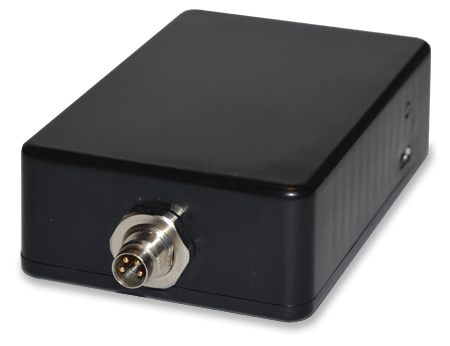
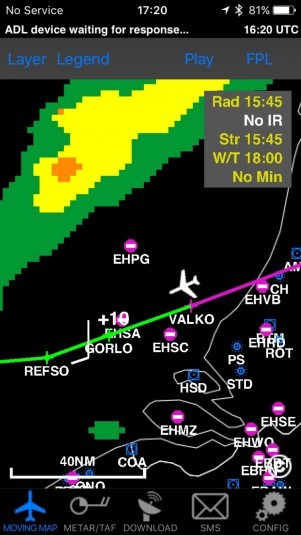
ADL 140 satellite tracker with associated iPhone/iPad app.
Thuraya satellite network
Thuraya (Arabic: الثريا, pronounced [aθːuˈrajːa]), from the Arabic name Thurayya meaning Star, is an international mobile satellite services provider based in the United Arab Emirates. They operate in more than 140 countries across Europe, the Middle East, North, Central and East Africa, Asia and Australia. There is no satellite coverage in North and South America and at the poles. However, the Thuraya network has a much better data bandwidth available in those areas where they operate and also at lower costs.
AeroPlus Satellite Blackbox
AeroPlus developed their own satellite device that works over the Thuraya network. The Thuraya version provides better data transfer speeds of up to 64 kbps to any aircraft equipped with it. It will only work well when connected to an external antenna. Our Thuraya-based solution is out of stock and not available anymore for sales.
AeroPlus satellite tracker.
For our customers using our device in combination with our web-based aviation weather and flightplan filing software to manage their flight operations, the satellite device offers tight integrated with our software.
* Not available. Out of stock.
